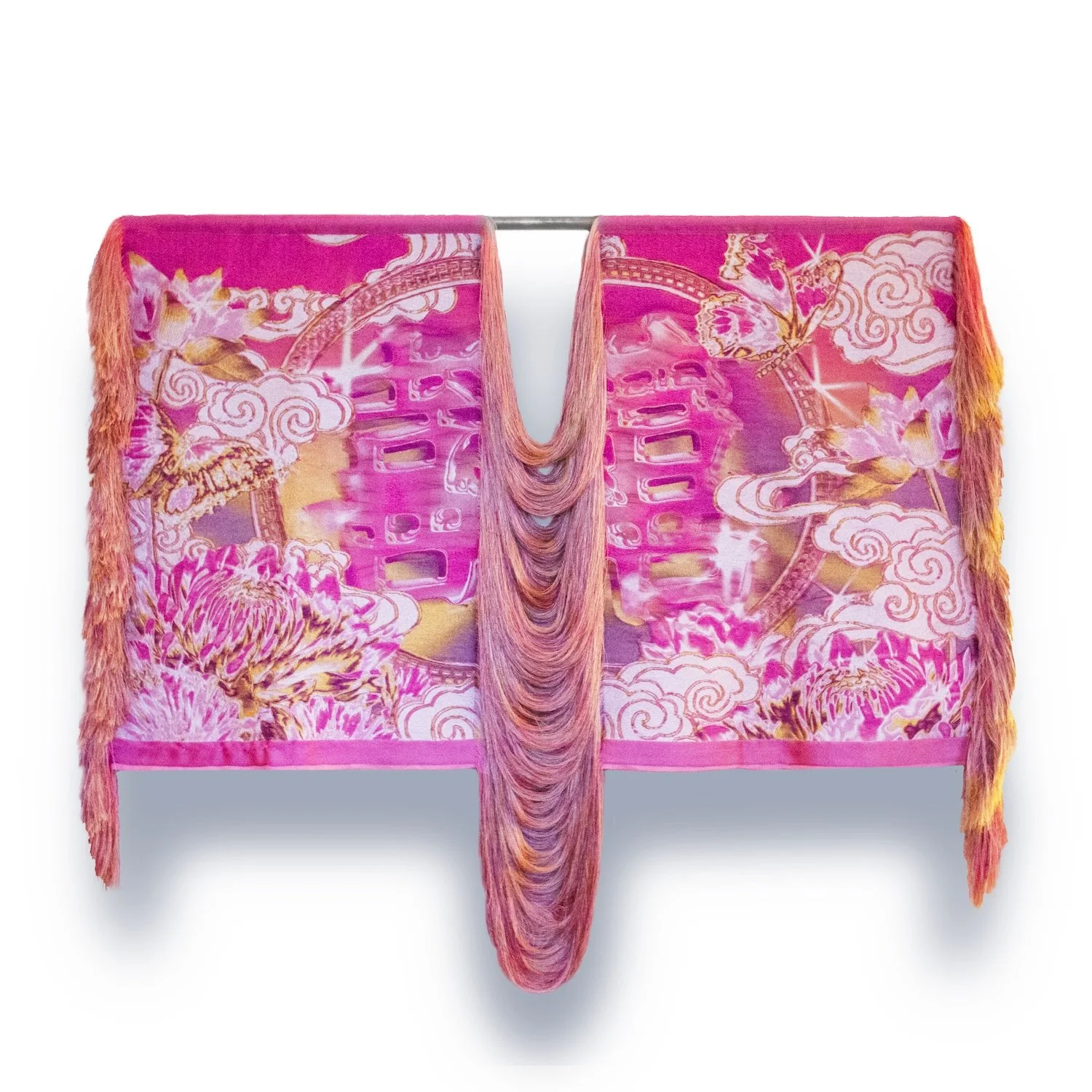Marcos Kueh – "Double Happiness — Summer"
Marcos Kueh – "Double Happiness — Summer"
Double Happiness — Summer
2024
Industrial weaving with recycled PET, 8 colours
56 × 100 cm
Edition of 6
SGD 6,000
For all sales enquiries, please get in touch with us at hello@thebackroomkl.com.
Marcos Kueh (b. 1995, Sarawak) is a designer who has always had a desire to better understand his place and identity as a Malaysian. He graduated with his Bachelor’s in Graphic and Textile Design from the Royal Academy of Art, The Hague in 2022. His practice is about safeguarding contemporary legends onto textiles as tools for storytelling, just as the ancestors of Borneo did with their dreams and stories, before the arrival of written alphabets from the West. Currently his artistic research is focused on evoking the presence of colonial narratives in our present-day lives and conjuring new myths of what it means to be an independent country.
In 2022, he was awarded the Ron Mandos Young Blood prize for emerging artists, and his work was acquired by Museum Voorlinden in Wassenaar and Stedelijk Museum in Amsterdam. His work has been presented in art fairs and exhibitions all around the world, including ASIA NOW Fair 2024, Paris, France; ART SG 2024, Singapore; Three Contemporary Prosperities (2022) at Galerie Ron Mandos, Amsterdam; When Things Are Beings (2022) at the Stedelijk Museum, Amsterdam; This Far and Further (2022) at Museum Voorlinden, Wassenaar, Netherlands; Common Threads (2017) at The Back Room, Kuala Lumpur; and UNKNOWN Asia (2017 & 2023), Osaka, Japan. His debut solo exhibition was Kenyalang Circus at The Back Room, KL, in 2023. Recently, he unveiled a nine-part installation under the Hanya Satu Single programme at the National Art Gallery of Malaysia, Kuala Lumpur, in December 2024.
He currently lives and works in The Hague.
Artist Statement
Four Seasons of Separation (2024) is a series of four works that are themed around the four seasons and feature the phrase “囍” (the Chinese word 喜, xǐ, meaning “joy” repeated twice and turned into a single character), referring to the Chinese calligraphy/ornamental design of shuāngxǐ (double happiness), which is typically associated with marriages. All of the artworks are split down the middle, separating the two “happiness”es and condemning each character to live in their own separate realm, held together by loose threads. In this, the artist explores his failure to fulfil his parents’ expectations for him to get married, but also explores how he, as a son who currently lives apart from his family, has also had to adapt to the “seasons of separation” and find his own identity and happiness as an individual.

